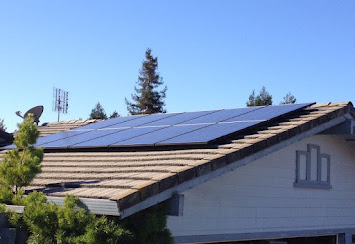Connected Sunshine: Solar Grid Tie Systems
Connected Sunshine: Solar Grid-Tie Systems
In the quest for sustainable energy solutions, solar power has emerged as a
leading contender, transforming how we generate and consume electricity. A
significant advancement in this field is the development and deployment of
solar grid-tie systems, also known as grid-connected solar systems. These
systems not only harness the power of the sun but also integrate seamlessly
with the existing electrical grid, creating a dynamic synergy between renewable
energy and traditional power sources. In this blog, we'll explore the concept
of solar grid-tie systems, their benefits, challenges, and the impact they are
having on our energy landscape.
Understanding Solar Grid-Tie Systems
A solar grid-tie system is designed to connect a solar photovoltaic (PV)
array to the public electricity grid. This setup allows solar energy to be used
in real-time and any excess electricity generated to be fed back into the grid.
Essentially, it turns your home or business into a mini power station that can
contribute to the broader energy supply.
Components of a Solar Grid-Tie System:
1. Solar
Panels: These capture sunlight and convert it into direct current (DC)
electricity.
2. Inverter:
Converts the DC electricity produced by the solar panels into alternating
current (AC), which is the type of electricity used by most household
appliances and the electrical grid.
3. Grid-Tie
Controller: Ensures that the electricity being fed into the grid meets
the necessary standards and regulations.
4. Net
Meter: Monitors the amount of electricity your solar system generates
and the amount you draw from the grid. It records the excess electricity sent
to the grid, allowing for credit or compensation from your utility provider.
5. Breaker
Switch: Provides safety by disconnecting your system from the grid if
needed, such as during maintenance or emergencies.
Benefits of Solar Grid-Tie Systems
1. Reduced
Electricity Bills: By generating your own solar power, you can reduce
your reliance on the grid, resulting in lower electricity bills. Any excess
energy produced can be sold back to the grid or credited, depending on your
utility’s net metering policies.
2. Environmental
Impact: Solar energy is a clean and renewable resource. By integrating
solar power into the grid, you contribute to reducing greenhouse gas emissions
and dependence on fossil fuels, helping to combat climate change.
3. Increased
Energy Independence: While grid-tie systems don’t completely
disconnect from the grid, they provide a degree of energy independence by
reducing the amount of electricity you need to purchase from your utility
provider.
4. Enhanced
Grid Stability: Distributed solar power can improve grid stability and
resilience by providing additional electricity during peak demand periods. This
can help reduce the strain on the grid and potentially lower the risk of
blackouts.
5. Economic
Incentives: Many regions offer financial incentives for installing
solar grid-tie systems, such as tax credits, rebates, or performance-based
incentives. These can significantly offset the initial costs of installation.
Challenges and Considerations
1. Initial
Cost: The upfront cost of purchasing and installing a solar grid-tie
system can be significant. However, financial incentives and falling prices for
solar technology are making these systems more accessible.
2. Intermittency:
Solar power generation depends on sunlight, which can be inconsistent due to
weather conditions or time of day. While grid-tie systems can manage this by
drawing power from the grid when necessary, it's essential to plan for periods
of low solar output.
3. Regulatory
and Grid Compatibility: Grid-tie systems must comply with local
regulations and utility standards. This includes ensuring that the system’s
output matches grid requirements and that proper safety measures are in place.
4. Maintenance:
Although solar systems generally require minimal maintenance, periodic checks
and maintenance are necessary to ensure optimal performance. Regular cleaning
of solar panels and inspections of system components are essential.
The Future of Solar Grid-Tie Systems
The future of solar grid-tie systems looks promising as technological
advancements continue to enhance their efficiency and affordability.
Innovations such as smarter inverters, improved energy storage solutions, and
advanced grid management technologies are poised to further integrate solar
power into our energy infrastructure.
The rise of community solar projects and microgrids also presents exciting
opportunities for expanding the reach of solar grid-tie systems. These
initiatives allow more people to benefit from solar energy, even if they don’t
have suitable rooftops or financial means for individual installations.
Conclusion
Solar grid-tie systems represent a significant step forward in the journey
toward a sustainable energy future. By connecting solar power to the grid,
these systems offer a practical and efficient way to harness the sun’s energy
while benefiting from the stability and reliability of the existing electrical
infrastructure. As technology evolves and more people embrace solar power, the
synergy between solar grid-tie systems and the broader energy grid will
continue to grow, paving the way for a cleaner, more resilient energy
landscape.
In a world increasingly focused on sustainability, solar grid-tie systems
exemplify how we can leverage innovation and collaboration to create a
brighter, more connected future. Whether you’re a homeowner, business, or
policymaker, embracing this technology is a powerful way to contribute to a
more sustainable and energy-efficient world.




Comments
Post a Comment